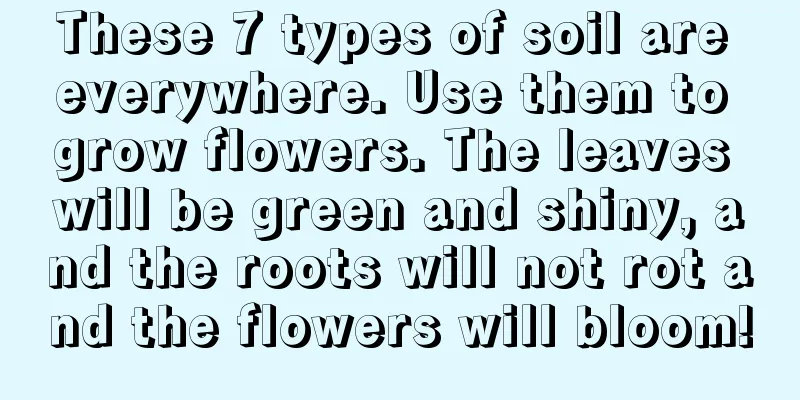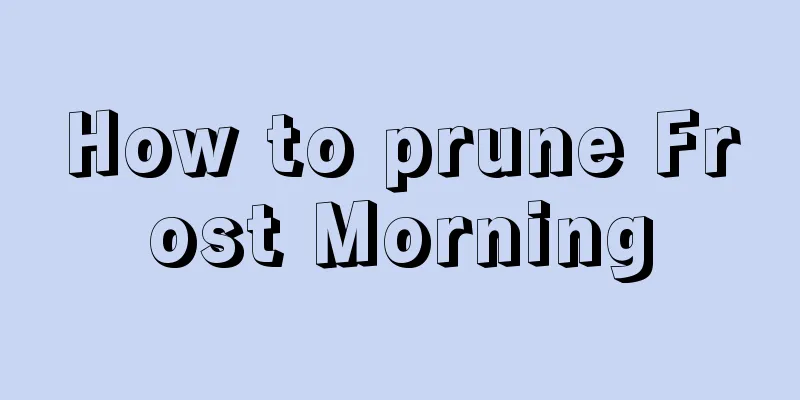These 7 types of soil are everywhere. Use them to grow flowers. The leaves will be green and shiny, and the roots will not rot and the flowers will bloom!

Leaf moldLeaf mold, the most common type in nature, is formed by years of decay of dead branches and leaves. Leaf mold is abundant in parks or woodlands. Leaf mold is a loose, slightly acidic soil rich in nutrients. It is most suitable when combined with garden soil and river sand to plant acid-loving flowers, such as azaleas, cyclamen, etc. Garden SoilGarden soil is available everywhere and is a type of soil that is necessary for growing plants. There is plenty of garden soil in the countryside and vegetable garden and it is easy to get. Garden soil is simple and convenient to use, but its air permeability is relatively poor. It needs to be improved by adding a substrate when using it. Commonly used substrates are perlite, vermiculite or decomposed pine needles. Pine Needle SoilPine needle soil is generally formed by fallen pine needles that accumulate over a long period of time. Pine needle soil is abundant in pine forests or places with coniferous trees. Pine needle soil has high nutritional value and contains a variety of trace elements. It is the best choice for growing flowers. It is often used with garden soil to grow Clivia, orchids and other flowers and plants that like loose and breathable soil. LandslideThere are two types of mountain mud: yellow mountain mud and black mountain mud, which are formed by the long-term accumulation of fallen leaves from trees in the mountains. Mountain mud is a natural humus soil with loose texture. Black Mountain mud is acidic and contains more humus; Huangshan mud is also acidic, heavier and contains less humus. Mountain mud is often used as the main raw material for growing acid-loving flowers such as camellia, orchid, and azalea. humusHumus is a mixture of various animal and plant remains and various types of organic waste. Humus soil is abundant in parks or places with lush vegetation. Humus soil can be used for potted plants. It contains a variety of organic substances and trace elements. Humus soil is loose, acidic, has good water retention, and is suitable for planting most flowering plants. cinderThe coal slag after burning is breathable and sterile, and contains trace elements needed by plants. If you don’t want to buy soil, then use this coal slag in large quantities! Coal slag must be soaked in water to remove the alkalinity before it can be used. Soak it for a few days, then break it up and mix it with the soil to make the soil loose and breathable. Cinders are a good substrate for growing succulents! River sandRiver sand is deposited at the bottom of the river. River sand is divided into coarse sand and fine sand, which can improve the looseness of the soil. Fine sand has good water retention and is loose and breathable. Therefore, it is a very good cutting medium. Because coarse sand has larger particles, it will form more gaps when mixed with other soil, so it has better water permeability and is suitable for growing succulents, camellia, orchids, etc. This is the end of the introduction to the soil for growing flowers~ What other soil have you used for growing flowers? Remember to recommend it to Huahua! |
Recommend
Is Hibiscus suitable for growing at home?
Can I grow hibiscus at home? The answer is yes. A...
What to do if the leaves of gardenia curl
1. Replenish water in time (1) Specific reasons: ...
How to grow mimosa on the balcony and what to pay attention to
1. Plenty of sunlight Mimosa is a plant that love...
Bromeliad hydroponics and precautions
How to hydroponically cultivate bromeliads The br...
How to pollinate Isuzu jade
Pollination of Isuzu Jade: Selecting Plants Befor...
What to do if black spots appear on the leaves of hydroponic Anthurium
1. Leaf spot (1) Specific cause: There is a disea...
How to make Chinese cabbage grow core quickly (how to make small cabbage grow core quickly)
Cabbage is one of the indispensable vegetables in...
What to do if the white bird succulent grows too tall? How to deal with it?
What does the white bird succulent look like when...
Reproduction of the flaming azalea
1. Cutting propagation In May and June, take 5 to...
What does the lotus represent?
1. Symbolism The phrase "藕断丝连" comes fr...
How many years does it take for a kiwi tree to bear fruit?
Introduction to Planting Kiwifruit Trees When pla...
Clove Pests and Control Methods
Lilac pests: leaf miners symptom The leaf miner i...
How to keep nasturtium plant short
1. Topping during the seedling stage Nasturtium g...
How to eliminate small flying insects
How to eliminate small flying insects Method 1: S...
Tips for indoor flower cultivation and fertilization
1. Flower cultivation skills 1. Light: When growi...









